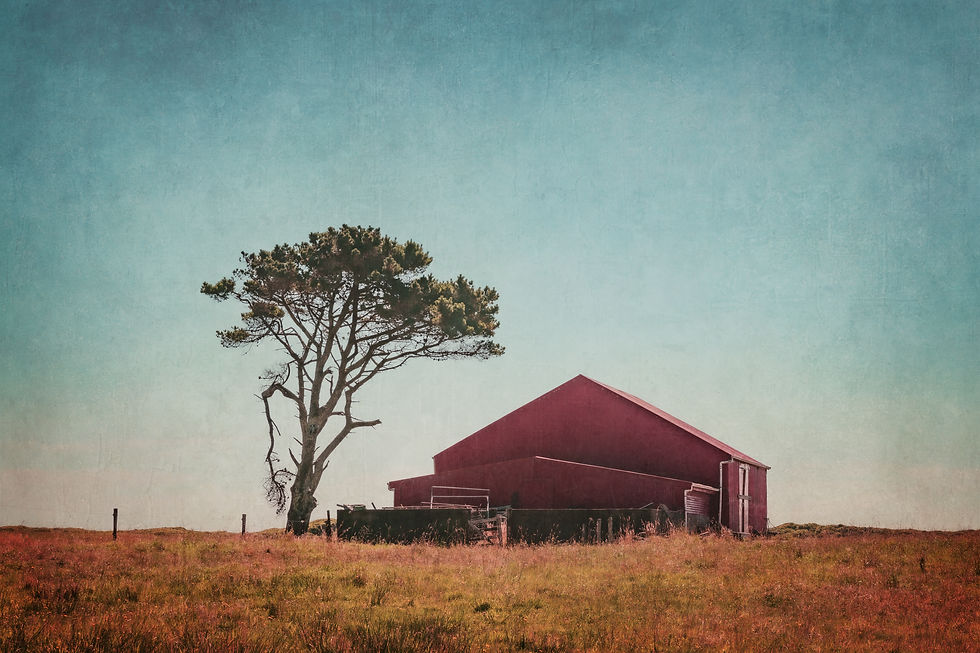FINE ART PHOTO EDITING FOR ARCHITECTURE in 7 steps
- Anthony Turnham

- Aug 28, 2020
- 4 min read
A lot of my professional work is architectural photography. Usually, the final edited photo is quite true to reality, full colour, and without too much in the way of artistic interpretation.
But I am a huge fan of black and white architectural photography. Particularly punchy, high contrast, low key imagery that celebrates the structure purely for its artistic merit. Here in this blog I'll share 7 steps you can use to post-process stunning architectural photos.

But before we dive into the fine art editing let's just briefly touch on taking the photo.
How To Take Artistic Architectural Photos
Firstly decide what type of capture best suits the structure you're photographing. Do the details and graphical elements call out to you? In that case, perhaps a telephoto lens zoomed in tight to create a very graphical image may be the best approach. Or as in this photo below where the spiral staircase has been framed to create the look of a fibonacci spiral (also known as the golden spiral).

If the building as a whole impresses you with its grandeur, consider framing it so it captures its impressive stature and sets it off against the sky as in this shot of The Shard in London.

If you are including the sky in your photo consider using a strong neutral density filter so you can force your shutter to stay open. A 10 stop ND filter is my favourite as it lets me capture movement in the clouds. The ND filter acts as sunglasses for your lens and forces the shutter to stay open.
Anyway, this isn't a tutorial on how to take the photo of the architecture, but rather, how to process it to create a stunning black and white look. So lets get into the steps... If you're more of a video kinda person, I've put together a youtube tutorial that should be of help and shows all of the steps involved.
7 Steps To Creating Fine Art Style Architecture Photos
The Concept
The concept is to sculpt the architecture using brightness values. Enhance areas of highlight and shadow to control your vision for the photo. I prefer a low key photo with minimal areas of highlights that demand the viewers attention.
The basic Editing Process
Create a good base layer that contains a full dynamic range from white through to black and has no clipping. This should be created from a RAW photo. Before converting to black and white, select the various facades of the building that you wish to change. After converting to black and white we then use curves to control the brightness of the different regions. We then make global adjustments to contast including vignetting if need be. Utilise a creative tool such as Luminar to push your creative vision to the next level.
1. Create a base layer with a good dynamic range
This can be done in Lightroom by boosting the shadows and controlling the highlights. The black and white points should meet the end of the histogram but they shouldn’t clip off the edge. A raw file should be used at this stage for the best results

2. Create selections of the different areas of the building Utilise selection tools to isolate the building. The pen tool is great for this.

3. Convert the image to black and white
There are so many black and white conversion methods. Most aren’t great but there are a few that stand out. The more flexibility the better. For this example we’re going to use the Black and White adjustment layer

4. Use the premade selections to brighten and darken areas, sculpting the building.
This step is where the meat of the effect happens. It will take a bit of practice but stick with it because the results are worth it. You want to emphasize the three dimensionality of the architecture by brightening and darkening areas. Often you will be just pushing the image in the direction of the light that's already falling on the architecture. But, sometimes, you're actually reshaping the building by playing with the light.
The key is to use the selections you made in step 2, and then control the brightness of that selected area with a tone curve adjustment layer. Pull down on the curve to darken, pull up to brighten, and add contrast with an S curve. If you're not confident you can check out my curves tutorial here. (The tutorial showcases Lightroom but the principals of the tone curve are the same).

5. Make global adjustments to contrast by adding an overall Curve adjustment Layer with an S Curve.

6. Let your creativity loose by loading the image into a tool such as Luminar for the finishing touches.

7. Consider adding a vignette
To control the highlights that are at the edge of the frame add another adjustment curve. This time bring the right hand point that controls the highlights downwards. Then create a radial gradient mask to control where the effect is applied. Refine this with a brush if necessary. Aaaaaand, you're done!
Creating a fine art look for your architectural photography really is a lot of fun. Take these steps, get to know them, and make them your own. My favourite steps are sculpting the photo with curves, and taking it into Luminar to add a bit more creative spice. If you're new to my work, you'll know I'm huge fan of adding more creativity to your workflow with Luminar.
Check it out here, and if you think it might be right for you, you can use the code ATSKY10 to get a $10 USD discount at the checkout.




Comments